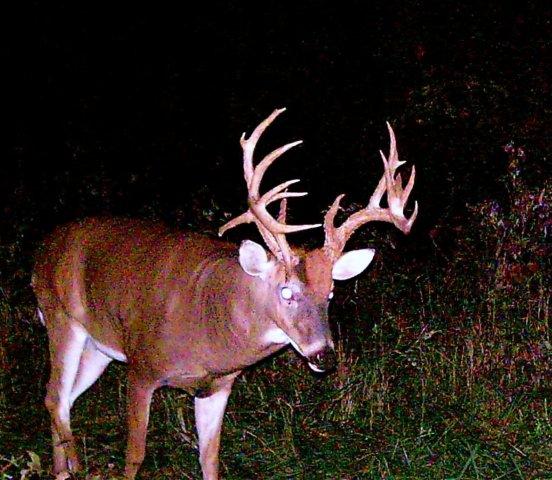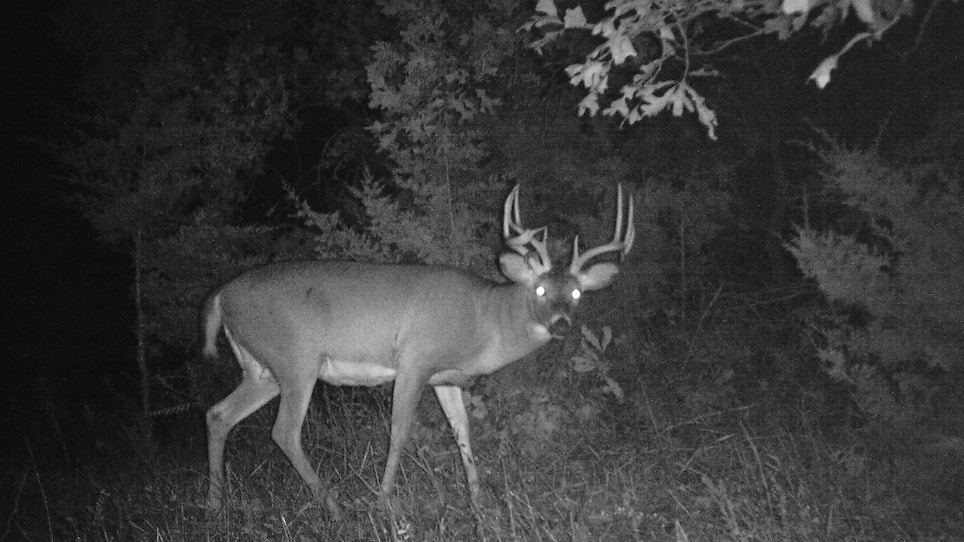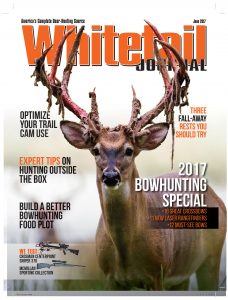There is no question that new technology has helped hunters chase big bucks. Of all the new innovations, nothing has made hunting more fun than trail cameras. We all know hunters that find the use of trail cameras almost as fun as the hunt itself. You just might be one of those hunters.
Trail cameras really started out as a way to photograph deer and other critters. It didn’t take long before many hunters were using them to find out what bucks are out there, which ones made it through the winter and how much antler growth was added from the previous year. However, there’s more you can learn about your deer and improve your management using trail camera surveys. More and more hunters today are doing camera surveys to learn about sex ratios, fawn survival and deer density on their property. Doing that may sound a bit complex, but it really isn’t. With hunting season over, it might be a good time to begin thinking about next fall. To do a camera survey involves a little planning. Here are the answers to some basic questions that will help you better manage your hunting area.
When do I do the survey? Depends on what you want to learn. Most will want to just assess the bucks on their property and get some idea of how many and what size and age they have. Others will want to know more about the deer they have and the herd’s sex ratio so they can plan their harvest management strategies. If these are your objectives, August is the appropriate time to run your survey. True, you can run one during the hunting season or even in winter after the season. However, most surveys are done in August. Antlers are in velvet, but fully grown so you know what you have. Acorns haven’t dropped yet, so baiting can be done (check your state laws on baiting first).
What bait is best? There are no set rules here, but kernel corn seems to work fine in most instances. Place cameras in areas where you have the most deer traffic, because you want lots of deer photographs. Field edges, trails, paths — wherever there is lots of deer use. The more deer pictured, the better. That said, space your cameras out as much as possible. Try to end have one camera per 100 acres. Then pre-bait each site for at least four to six days (if sites are not being hit, pre-bait longer). Turn on cameras during pre-baiting and check them to make sure they are working. Check each site at least every other day to make sure there is bait still there and it is being hit by deer. Begin your camera survey immediately after pre-baiting.
Related: When Do Deer Take the Bait?
How do I set up the survey? In addition, if you use one camera per 100 acres you will get almost no new bucks after 14 days. This is the reason to pre-bait four to six days and run your survey for 14 consecutive days. Turns out that sex ratios stabilize after only three to four days using one camera per 100 acres or even one camera for 200 acres. This means you can get a good handle on your sex ratio with only a three- or four-day survey. Getting data for sex ratio in any hunting area is critical information relative to determining doe harvest. I cannot overemphasize the importance of managing for an adult sex ratio of one buck per two or three adult does.
Obviously to get a more equal sex ratio you need to do one of two things — lower doe numbers and/or increase buck numbers. Passing up younger bucks is important and harvesting does is important. Why do you want equal sex ratios? Because they create more options for hunting, options that work and make hunting more fun. With equal sex ratios you increase competition for does. When you do that it opens up a whole bag of options. Mock scrapes, rattling, calling, using decoys, scents and lures, all work better when there is competition for does. Thus, learning what the sex ratio is will tell you how many does you need to harvest each year. It also provides you incentives to pass up those yearling bucks.

To photograph 90 percent of your deer, studies say ti use one camera for every 100 acres and run the survey for 14 consecutive days.
One other interesting tidbit about equal sex ratios: in areas where you work to get more equal sex ratios and pass on yearling bucks, yearling buck dispersal rates drop. This means you’ll have more bucks on your property, and that’s a good thing.
Use a map or aerial photo and decide where to place each camera. Clear the ground around the camera, and face the camera in a northerly direction to best avoid the sun. If using digital cameras, set the delay to once every five minutes or more so you are not inundated with photos of the same animal. Depending on the size of your area, putting out bait and cameras every 100 acres can get rather expensive, but such camera density gives you the best data. If you put out one camera site per 200 acres, you’ll get around 55 percent of the deer in your area, as compared to 90 percent with more cameras. However, there is another option to save money on cameras. Do half your area for 14 days, using one camera per 100 acres. Then move those cameras to the other half of your property, pre-bait for four to six days and run a second survey. It’s not perfect, but it will give you enough data to make it worthwhile.
Related: How to Control Your Deer
How often should I check cameras? Check cameras every other day to make sure they are working and there is still enough bait there. Don’t check the sites in early morning or late afternoon when deer are most active.
How do I analyze data? The Quality Deer Management Association has a great book out that will answer all your questions about running a trail camera survey called “Deer Cameras: The Science of Scouting.” I highly recommend that book and it will take you through each step, including analyzing your data. For the most part, your analysis will be pretty simple.
Relative to bucks, check each photograph for unique antler and body features that will enable you to distinguish individual bucks. Obviously antler characteristics are the best indicator when identifying individual bucks. Have friends go through your photos as well to confirm identification of individual bucks. While you are at it, estimate the age based on body confirmation for each buck.
Put each deer into a buck, doe or fawn category. If you can’t tell what they are, do not count them. Your “total” count at the end of the survey will include individual repeats. The above-mentioned book provides information on how to apply correction factors to your estimate, but for most of you, a simple adult buck count and a sex ratio estimate is what you are after.
One other point: Run your survey the same two weeks each year. After several years, you will have a great idea of what to expect relative to bucks and what will be available for harvest. For example, after several years you will know how many bucks are on your property and after several years of harvesting adult bucks, you’ll get a good feel for how many adult, mature bucks you can take and still have great bucks the following year.
The average hunter today is not the same as 30 years ago. We know more about our deer than we ever did, and the use of trail cameras is one of the reasons. They provide great information and reviewing the results is almost as much fun as being on stand.







